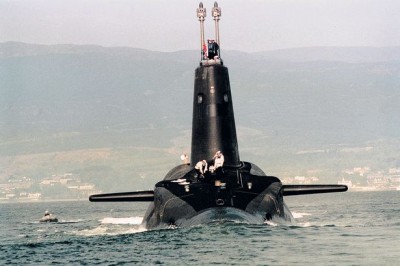Lacking “The Smarts”: Australia’s Submarine Fiasco

The defence portfolio presents states with pressing conundrums. The modern state, with the continuing mania with outsourcing, privatisation and links with a range of global contractors, has every reason to assume that the old defence ideas have turned to dust. The only thing that doesn’t change is the incentive on the part of defence companies to make money. Governments, in what continues to be a permanent lack of wisdom, tend to buy their products.
An all too neat illustration of this is the submarine fiasco that has tended to plague Australia for decades. For an island continent, the country shows remarkable aptitude in making appalling decisions on its maritime acquisitions. Its six Collins-class submarines were spectacular duds, a classic representation, not of what UK prime minister David Cameron termed a “can do” culture, but a “can’t do” ineffectiveness. It grew out of an interest on the part of the Australian Labor government to create an indigenous class of submarine in Australia. It was patriotic and, coming on the heels of that sentiment, suitably daft. “The cost was insane, the performance lamentable, the legacy debilitating.”[1]
The madness continued in the defence white paper of the Rudd Government in 2009, which moved in intoxicated fashion towards the construction of 12 new submarines in Australia. Grandiose, it was made even as the Collins-class submarines languished without a sufficient maintenance system. Another act of pompous optimism that wandered into the archive of poor decisions and draining expenses.
The Coles Review of 2012, or a Study into the Business of Sustaining Australia’s Strategic Class Submarine Capability, had no issue with the competency of the crew of the Royal Australian Navy, or even the design of the fleet. But commissioned maritime expert John Coles could not avoid conspicuous absence of a sufficient sustainment system since the Collins Class submarines came into service in 1996.[2] The best service Australian submarines were going to give, notably those designed in the 1980s and 1990s, was in maintenance.
The debate now is centred on linking the building of such submarines with either the creation or loss of local jobs, notably those in South Australia. This has seen a good deal of populism, with the opposition leader, Bill Shorten, merrily chauvinistic in his efforts to convince Australian workers that Japanese involvement in the venture was dangerous. “In the Second World War, 366 merchant shops were sunk off Australia.” Australian Manufacturing Workers Union national secretary Paul Bastian joined in. “Japanese subs on the way. Do you feel betrayed?”[3]
Australia’s otherwise insensitive Prime Minister has, in contrast, decided to run it through the cost-benefit analysis, and sees little prospect for keeping operations local.
Australia’s government-owned shipbuilder is showing that salad day optimism that should be treated with extreme caution. The interim head of Adelaide-based Australian Submarine Corp (ASC), Stuart Whiley, told the Senate estimates hearing on Thursday that the firm could construct 12 new submarines for between $18 billion and $24 billion. The predicted overseas tab on this by the government’s current studies suggest a cost between $20 and $30 billion.
All the options open to Canberra have potentially disruptive risks. The Japanese have never exported submarines to Australia, and remain virginal in the market. There are open political questions as well. European options are also on the cards – Germany’s TKMS, Sweden’s Saab, and France’s DCNS in partnership with Thales – but these remain costly and would require local engineering feats of some magnitude.[4] The French option, for instance, would involve refashioning a nuclear weapons variant and outfitting it as a conventional one meaning more time and cost.
In terms of figures, Germany’s TKMS (ThyssenKrupp Marine Systems) is happily dangling the carrot in front of Abbott’s officials. The price tag there comes to $20 billion for 12 submarines. “And that’s an indicative price,” suggests the company’s chief executive Philip Stanford, “and includes all the programmatic aspects to deliver the submarine in Australia.”[5]
Stanford is smooth, treating the building of submarines like dealing with aged care for patients wanting to stay at home – the flavour of domesticity if you will. “So what ThyssenKrupp Marine Systems does is it facilitates that by providing the skills, technology transfer and other processes required to do a domestic build for its customer.”
The amount suggested by Stanford is optimistic on several accounts, well tailored to similar cost analysis from the South Australian Economic Development Board. Their figures assume a similar $20 billion tab, whether the submarines were built in Australia or overseas. Economic critics were quick on the draw. “The options posited,” argued Henry Ergas and Mark Thomson, “immediately skew the analysis by assuming that with the foreign build option, heavy maintenance would be done offshore. In fact it would be feasible and advantageous to perform heavy maintenance in country.”[6]
All too much astrological play comes into the game of purchasing submarines. Input-output modelling, something that continues to be used, is notoriously unreliable. There is also a deluded presumption that exchange rates stay constant, a fashionably theoretical idea that is nonsensical in any practical sense. (The Australia dollar is gradually losing ground to its US counterpart.) And pipe-dream sentiments persist about chest-thumping prowess to get the local job done. “Assuming the identified errors are corrected, Australia has ‘the smarts’ to build and maintain submarines to a standard and cost comparable with its competitors.”[7]
Nor would the costs cease at the moment of purchase or construction. The ongoing maintenance of a submarine fleet is a dear affair, as the Royal Australian Navy should know. It represents a continuous drain on the treasury. But the bank balance of patriotism tends to ebb and flow. Expecting cerebral constancy here is out of the question.
Dr. Binoy Kampmark was a Commonwealth Scholar at Selwyn College, Cambridge. He lectures at RMIT University, Melbourne. Email: [email protected]
Notes
[1] http://www.theaustralian.com.
[2] http://www.defence.gov.au/
[3] http://www.theaustralian.com.
[4] http://www.theage.com.au/
[5] http://www.abc.net.au/am/
[6] http://www.aspistrategist.org.
[7] http://www.aspistrategist.org.

